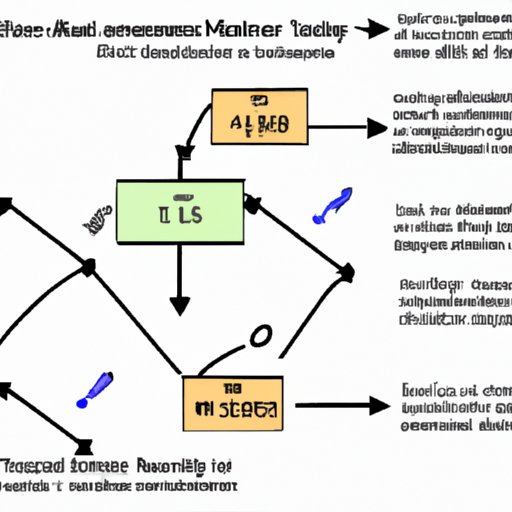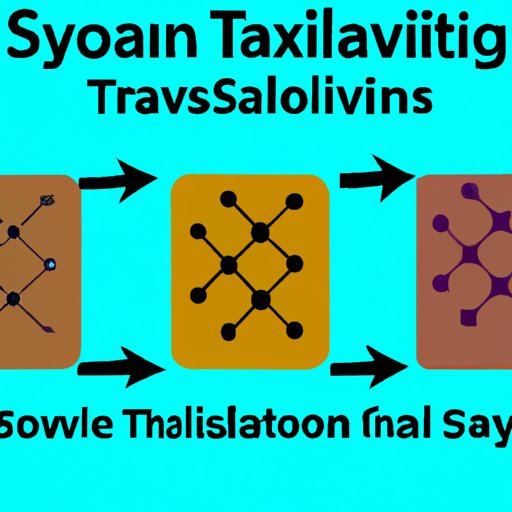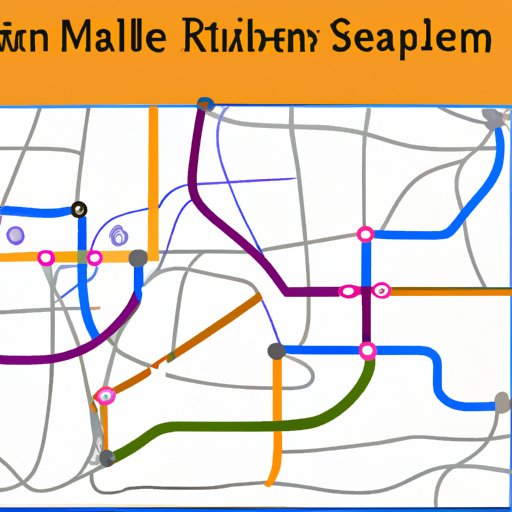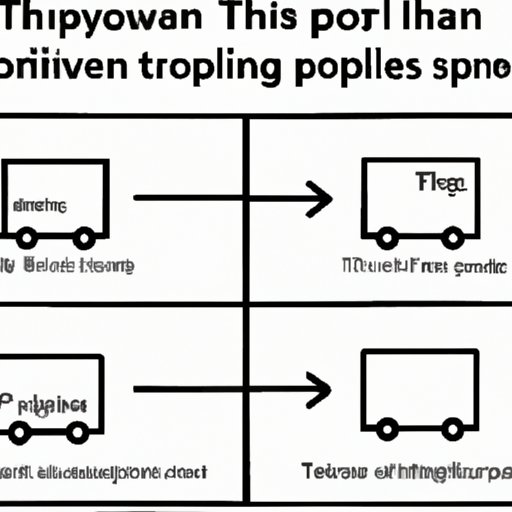Introduction
The traveling salesman problem (TSP) is a classic problem in computer science and operations research. It involves finding the shortest route that visits all given points while minimizing the total cost or time. The traveling salesman problem has been studied since the 1930s and has a wide range of practical applications. In this article, we will explore the basics of the traveling salesman problem and examine how it can be used to find optimal routes in practice.
Exploring the Basics of the Traveling Salesman Problem
The traveling salesman problem is a well-known problem in mathematics and computer science. It is defined as follows: Given a set of cities and the distances between them, find the shortest possible route that visits each city exactly once and returns to the starting point.
For example, consider a salesperson who needs to visit four different cities – A, B, C, and D – in the most efficient way possible. The goal is to find the shortest route that starts and ends at A, visits B, C, and D, and returns to A. The figure below shows an example of a route that meets these criteria.

In this example, the total distance traveled would be the sum of the lengths of the edges connecting the cities, or AB + BC + CD + DA = 14. This route is known as an optimal solution, as it is the shortest route that visits all the cities.
When considering the traveling salesman problem, it is important to take into account both time and cost. For example, if the salesperson needs to travel by plane, then the cost of the flight must be taken into account when calculating the total cost of the route. Similarly, if the salesperson needs to travel by car, then the time taken to travel between each city must be taken into account when calculating the total time of the route.

An Overview of the Traveling Salesman Problem and Its Applications
The traveling salesman problem can be formulated mathematically using graph theory. In graph theory, a graph is a collection of vertices (cities) and edges (distances between cities). The TSP can be represented as a graph where the goal is to find a Hamiltonian cycle, or a path that visits each node exactly once and returns to the starting point.
The traveling salesman problem has a wide range of practical applications. For example, it can be used to determine the most efficient delivery route for a fleet of vehicles, such as trucks or taxis. It can also be used to optimize the layout of a factory or warehouse, or to plan a tour route for a group of visitors.

Solving the Traveling Salesman Problem with Algorithms
There are two main types of algorithms used to solve the traveling salesman problem: exact algorithms and heuristic algorithms. Exact algorithms are designed to find the optimal solution, while heuristic algorithms are designed to find approximate solutions that are close to the optimal solution.
Exact algorithms use mathematical methods to solve the problem. These algorithms guarantee to find the optimal solution, but they can be slow and computationally expensive. Examples of exact algorithms include branch and bound, dynamic programming, and integer linear programming.
Heuristic algorithms use trial and error to find approximate solutions. These algorithms are much faster than exact algorithms, but they do not guarantee to find the optimal solution. Examples of heuristic algorithms include greedy algorithms, simulated annealing, and ant colony optimization.

Finding Optimal Routes with the Traveling Salesman Problem
Once a solution has been found, it can be evaluated to determine how close it is to the optimal solution. This can be done by calculating the total distance or cost of the route, and comparing it to the optimal solution. If the difference between the two solutions is small, then the solution is considered to be close to optimal.
It is also possible to optimize a solution further by making small changes to the route. For example, if two cities are swapped, then the total distance or cost may be reduced. This process can be repeated until the optimal solution is found.
Implementing the Traveling Salesman Problem in Practice
The traveling salesman problem has many practical applications. It can be used to optimize delivery routes, plan factory layouts, and even generate tour routes for visitors. There are also a number of software tools and services available that can be used to solve the traveling salesman problem.
For example, Google Maps provides an API that can be used to calculate the distance between two points. This can be used to solve the traveling salesman problem and generate optimal routes. Other services, such as Mapbox, offer similar APIs that can be used to solve the traveling salesman problem.
Conclusion
The traveling salesman problem is a classic problem in computer science and operations research. It involves finding the shortest route that visits all given points while minimizing the total cost or time. The traveling salesman problem has a wide range of practical applications, from optimizing delivery routes to planning factory layouts. Algorithms can be used to find optimal solutions, and there are a number of software tools and services available for solving the problem.
(Note: Is this article not meeting your expectations? Do you have knowledge or insights to share? Unlock new opportunities and expand your reach by joining our authors team. Click Registration to join us and share your expertise with our readers.)
